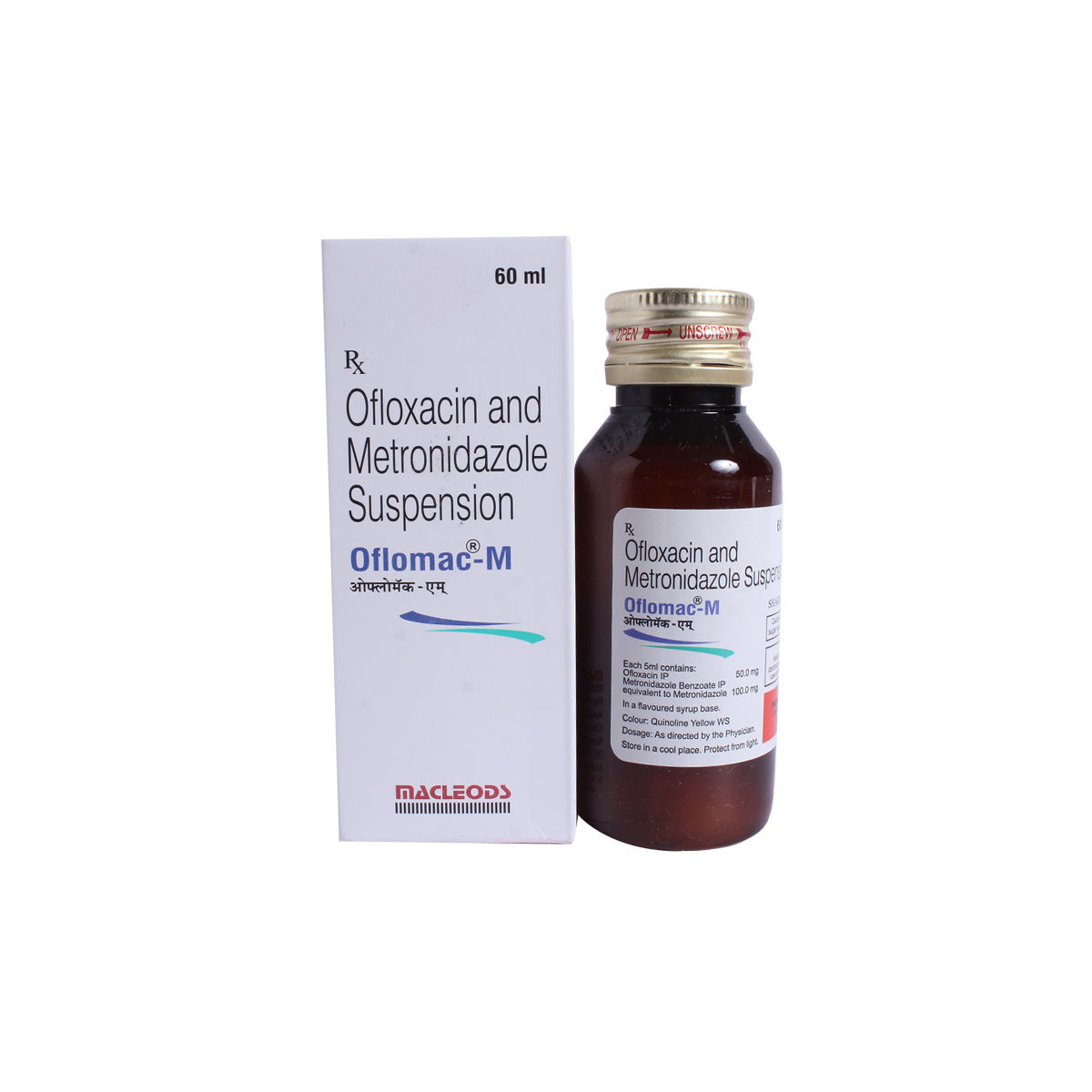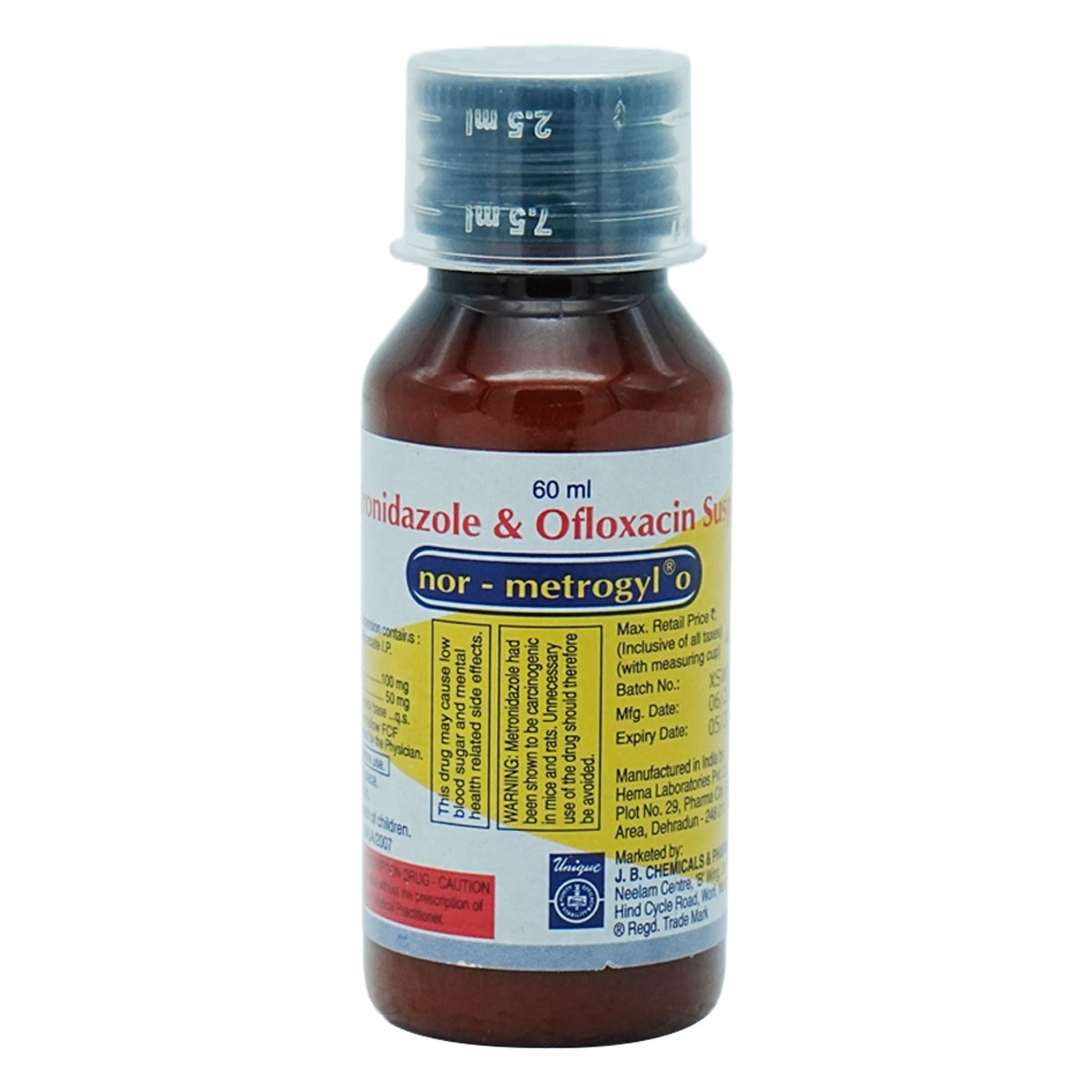Reoflox-M Paed Suspension 30ml
Reoflox-M Paed Suspension is an antibiotic medicine used to treat bacterial infections in children. It contains Ofloxacin and Metronidazole. Ofloxacin works by inhibiting the repair of the bacterial cell wall (a protective covering) and causing damage to the bacterial cell wall. This eventually leads to the death of the bacterial cell and thus prevents the growth of bacterial infections. Metronidazole kills parasites and anaerobic bacteria that are responsible for causing infections. It works by damaging their DNA.
₹36*
MRP ₹40
10% off
₹34*
MRP ₹40
15% CB
₹6 cashback(15%)
Free Delivery
With Circle membership
(Inclusive of all Taxes)
This offer price is valid on orders above ₹800. Apply coupon PHARMA10/PHARMA18 (excluding restricted items)
Know Your Delivery Time
Provide Delivery Location

Available Offers
 Prescription drug
Prescription drugWhats That

Secure Payment

India's Most Trusted Pharmacy

Genuine Products
Composition :
Manufacturer/Marketer :
Consume Type :
Return Policy :
Expires on or after :
About Reoflox-M Paed Suspension
Reoflox-M Paed Suspension is an antibiotic medicine used to treat bacterial infections in children. It is used in treating infections of the skin, throat, ear, and lungs caused by bacteria. It is also used in the treatment of dysentery (bloody stools) caused by amoeba. A bacterial infection occurs when harmful bacteria enter and grow in the body. This bacteria can infect any part of the body and multiply very quickly. Amoebic dysentery can be caused due to Entamoeba histolytica, Giardia lamblia, or Clostridium difficile.
Reoflox-M Paed Suspension is a combination medicine containing Ofloxacin (fluoroquinolone) and Metronidazole (antimicrobials). Ofloxacin works by inhibiting the repair of the bacterial cell wall (a protective covering) and causing damage to the bacterial cell wall. This eventually leads to the death of the bacterial cell and thus prevents the growth of bacterial infections. Metronidazole kills parasites and anaerobic bacteria that are responsible for causing infections. It works by damaging their DNA.
Reoflox-M Paed Suspension may cause certain side effects in your child such as indigestion, diarrhea, nausea, and stomach pain. These side effects do not require medical attention and gradually resolve over time. However, if the side effects persist or worsen, please consult your paediatrician. Reoflox-M Paed Suspension should be given as advised by your paediatrician. Do not give more than the prescribed dose of Reoflox-M Paed Suspension to the child. Generally, the dose of the medicine will be decided by your paediatrician depending upon the type and severity of the infection.
Reoflox-M Paed Suspension is intended for pediatric use only. Avoid giving Reoflox-M Paed Suspension to your child if she/he is allergic to antibiotics. Keep your doctor informed about your child’s health condition including his current medications and medical history to rule out any side effects/interactions. Before administration, let your paediatrician know if your child has lung disease, muscle weakness, liver, and kidney disease.
Uses of Reoflox-M Paed Suspension
Directions for Use
Medicinal Benefits
Reoflox-M Paed Suspension contains Ofloxacin and Metronidazole (antimicrobials). Both these drugs are broad-spectrum antibiotics that act against aerobic (grow in the presence of oxygen) and anaerobic (grow in the absence of oxygen) bacteria. Reoflox-M Paed Suspension is used in the treatment of several bacterial infections and amoebic dysentry in children. Ofloxacin works by inhibiting the repair of the bacterial cell wall (a protective covering) and causing damage to the bacterial cell wall. This eventually leads to the death of the bacterial cell and thus prevents the growth of bacterial infections. Metronidazole works by damaging the DNA. This kills parasites and anaerobic bacteria that are responsible for causing infections.
How Reoflox-M Paed Suspension Works
Storage
Side Effects of Reoflox-M Paed Suspension
- Nausea
- Diarrhea
- Stomach upset
- Indigestion
- Vomiting
What if I have taken an overdose of Reoflox-M Paed Suspension
Drug Warnings
Avoid giving Reoflox-M Paed Suspension to your child if she/he is allergic to antibiotics. Keep your doctor informed about your child’s health condition including his current medications and medical history to rule out any side effects/interactions. Before administration, let your paediatrician know if your child has lung disease, muscle weakness, liver, and kidney disease. Dairy products should be avoided along with Reoflox-M Paed Suspension.
Diet & Lifestyle Advise
- Include more fiber-enriched food in your child’s diet, as it can be easily digested by your gut bacteria, which helps stimulate their growth.
- Fiber foods may help restore healthy gut bacteria after a course of antibiotics.
- Avoid giving too much calcium, or iron-enriched foods, as it might affect the working of Reoflox-M Paed Suspension.
- Make your child drink more fluids to avoid dehydration.
- Do not make your child drink or eat a lot of caffeine-containing products such as cola, or chocolate.
Habit Forming
Therapeutic Class
Reoflox-M Paed Suspension Substitute

OFM 50 mg/100 mg Suspension 60 ml
by AYUR
₹0.95per tabletOflomac-M Suspension 60 ml
₹0.94per tabletNor-Metrogyl O Suspension 60ml
by AYUR
₹0.87per tabletOflox Oz Nf Suspension 30Ml
by AYUR
₹2.37per tabletPowergyl Suspension 30 ml
₹2.39per tablet
Product Substitutes
Alcohol
Not applicable
-
Pregnancy
Not applicable
-
Breast Feeding
Not applicable
-
Driving
Not applicable
-
Liver
Caution
Please consult your doctor if your child has a liver impairment or if you have any concerns regarding this.
Kidney
Caution
Please consult your doctor if your child has a kidney impairment or if you have any concerns regarding this.
Children
Safe if prescribed
Reoflox-M Paed Suspension is safe for children if prescribed by the doctor. The dose of the medicine will be decided by your paediatrician. Do not give more than the recommended dose to your child.
FAQs
Country of origin
Manufacturer/Marketer address
Disclaimer
Author Details
We provide you with authentic, trustworthy and relevant information

















